10 Child Friendly Garden Ideas for Families

A garden is the perfect place for kids to let their adventurous side out. Time travel, live action fairy tales and global expeditions are all just waiting to happen right outside your back door, and you can get involved, too!]
Design your garden around the kids, and they’ll reward you by bringing it to life - whether you’re planting or playing together, you’ll appreciate the outdoors that much more when you’re sharing the experience with family.
Are you planning your future garden escapades? Here are 10 child-friendly back garden ideas to get your family outside together.
Safety First!
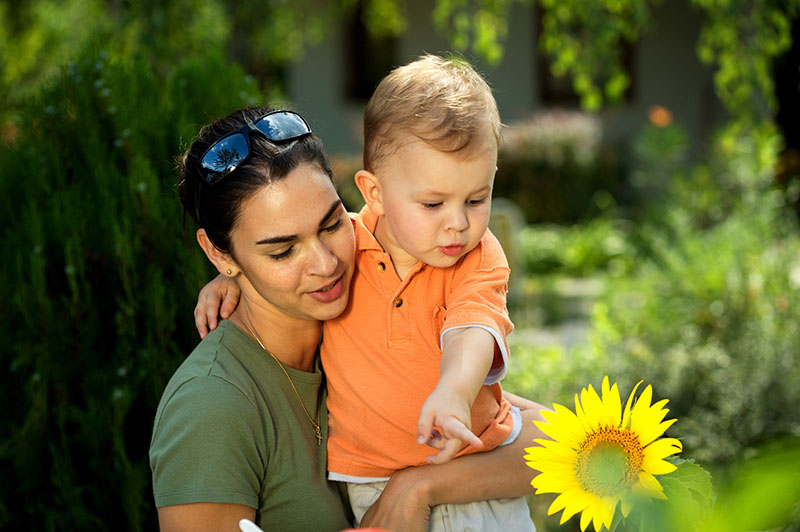
1. How To Choose Child-Safe Plants
Toddlers love to eat whatever they can grab. Bulbs, flowers, snails and worms are all on the table - so it’s up to you to make sure that whatever they grab is safe! Avoid plants such as foxgloves, hydrangea and bluebells. If you do plant them, make sure that they’re well out of reach of children! For more information, the RHS has a fantastic guide on which plants to avoid in a child-friendly garden.
Instead of planting the above, you can lean into safe, nontoxic plants such as lavender, sunflowers, nasturtiums and fruit trees. Vegetable patches are also a great way to get kids learning all about farming and food, and their fully fledged vegetables will give them something to brag about at school!
2. How To Make Garden Steps Safe for Toddlers
How to make your garden safe for toddlers is a concern most parents of little ones have. If your garden is designed with concrete, bricks and sharp angles, your toddler’s wobbly legs are bound to have you on edge when they’re outside. Unfortunately, making garden steps safe for toddlers is mostly up to active prevention; you should make sure that your child understands the dangers of steps and that you’re with them whenever they’re going up and down.
If you’re still nervous, you can invest in non-slip coverings for your garden steps. This will make them safer for you, too! You can also lay out soft mats wherever you’re concerned that your toddler could have a topple.
3. How To Childproof a Pond
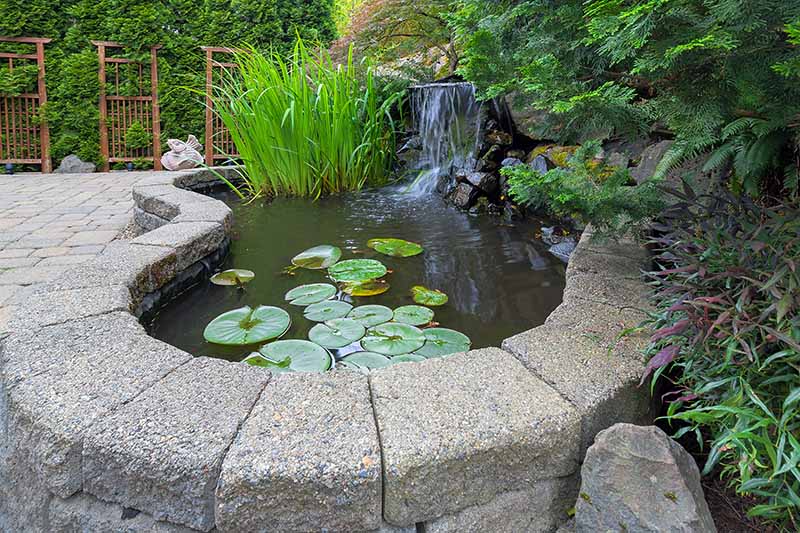
There’s nothing quite as fascinating to kids as a wild pond. Tadpoles, newts, frogs, and fish can all live out their lives right under their noses! However, where there’s water, there’s always a risk: childproofing is one of the most important considerations when planning out your garden pond.
Build a raised platform around the pond to mark it clearly. If your children are young, you may also want to install a fence around the perimeter to prevent wobbly toddlers from getting too close to the water. A covering can help you and your kids get close to the pond without any risk - if you do this, make sure that there are gaps large enough to allow wildlife to come and go freely.
4. How To Store Garden Tools Safely
Gardening requires a lot of tools, and those tools are not always safe for kids to use! Make sure you have a garage or shed set aside for dangerous items like hedge trimmers, shovels and shears. Keep these places padlocked and inaccessible for your kids, and store chemicals on high shelves wherever possible. Make sure that children are not in the garden when these tools are in use.
Get the Kids Involved
5. Let the Kids Help When Cooking Outside
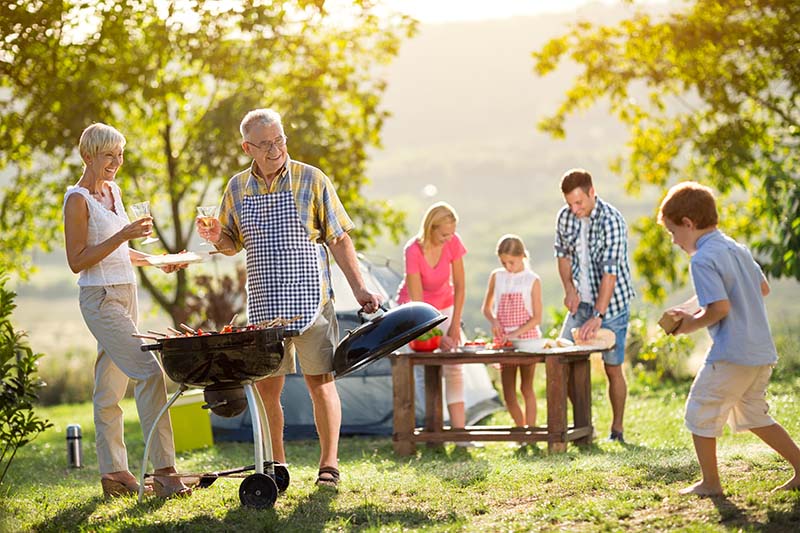
A study in the US shows that children who cook have healthier eating habits, so on these warm summer days, when you bring barbecues and cookouts to your garden, use it as an opportunity to get your children involved – especially as it’s a change of scenery without the distractions of the TV or games console.
While you should keep young kids away from fire, you can get them involved in other ways! Set up a table with a big chopping board to let them help with food prep and sit with you while you cook. If you have older kids, you can also let them help with the grill. Flipping burgers, piercing sausages, seasoning a salad, and monitoring meat temperature are all great ways to get them excited about cooking in the garden.
6. Let Them Keep a Flowerbed
Involve your kids in creating a beautiful garden by giving them their own space to plant. This could be a rockery, a greenhouse, a vegetable patch or a single planter - wherever you have some extra space! Take them to the garden centre and let them choose their own safe plants to care for. Help them arrange them however they’d like, and teach them how to seed, weed and water as they grow.
7. Encourage the wildlife
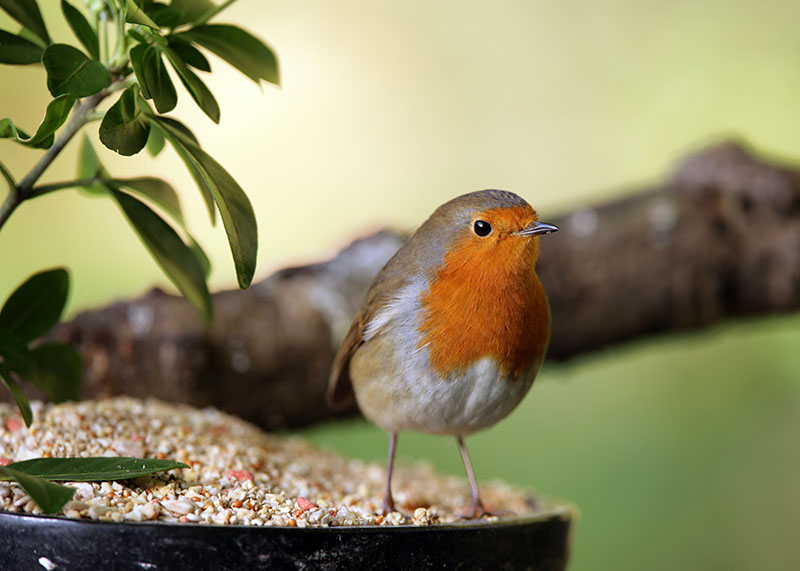
Eco-friendly gardening is the perfect way to teach your kids about taking care of the world around them. Put up insect boxes, bird feeders and bird boxes to encourage wildlife such as insects, frogs and birds. You can also build a stick pile and see what shows up!
When encouraging wildlife, always check whether there are adders, badgers or foxes in your area. Keep an eye out for signs of these animals in your garden - if you see them, take steps to fix fences and deter them from your home. Make sure that your kids know to stay away from wild animals.
8. Make a Wormery
Show your kids the value of detritivores with a DIY wormery. To make one, cut the top off a bottle and fill it with alternating layers of soil and sand. Finish it off by dropping a worm or two inside! The kids will be able to watch as the worms make their way through the soil, and you can teach them about the decomposition process and the benefits of compost.
Design Your Garden for Them, Too!
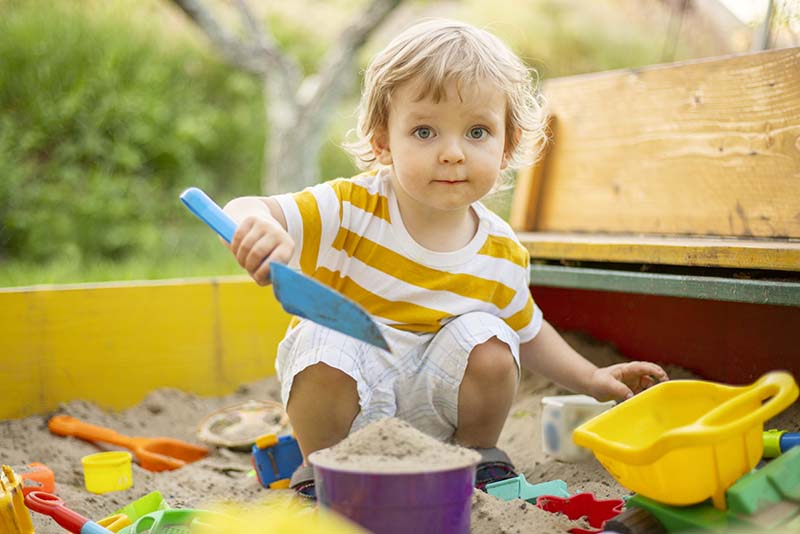
9. Include a Play Area
If you have space, play areas are a great addition to gardens to help get your children outdoors. Play tents, sand pits, and playhouses are all great ways to give young kids space in your garden. As they get older, these can be switched to trampolines and swings!
10. Leave Space for Running Around
Grass is great for kids! If you don’t want them running through your flowerbeds, make sure that you have a lawn for them to stretch their legs. You can also provide games for them to play on the lawn such as bowls, hula hoops and swingball. If you don’t mind your lawn being used to pitch a tent, you can also set up and camp in the garden!
For more creative tips and ideas for personalising your outdoor space, check out our blog here.

